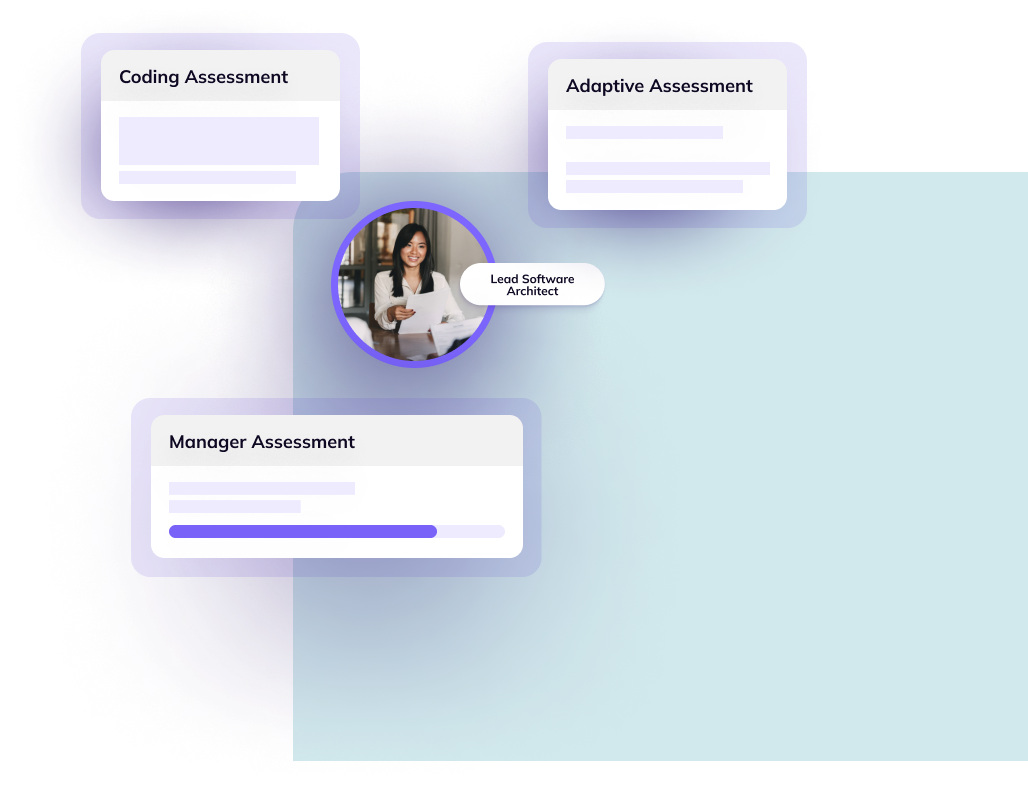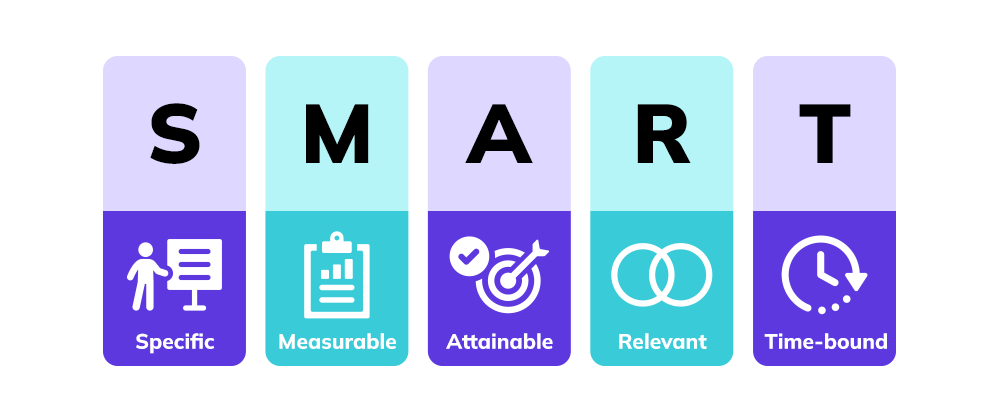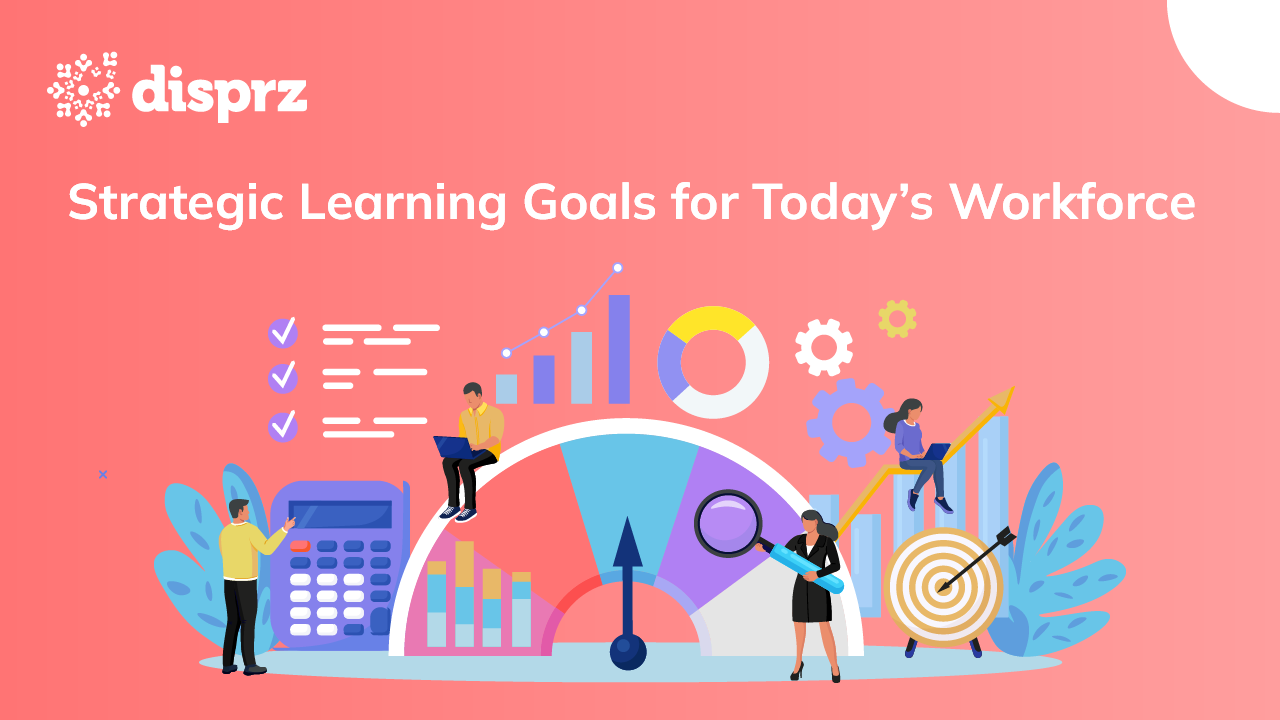Goal setting and personal growth have long been integral to professional success. In today's landscape of wavering workplace engagement, goal setting emerges as a crucial tool for crafting a shared roadmap between employees and management. To improve engagement, targeted goal setting serves to illuminate expectations and bind learners to their overarching purpose within the workplace.
Setting clear and achievable learning goals is a crucial step in any professional journey. For employees aiming to enhance their skills, effective goals serve as roadmaps to guide their progress and ensure continuous improvement. According to a PwC 2023 CEO survey, 52% of CEOs believe that skills shortages will impact their business to a large or very large extent. This makes it even more important for organizations to set learning goals.
We'll explore the strategies and techniques for developing meaningful and impactful learning goals that help propel organizations towards success.
Understand the Importance of Learning Goals
Before diving into the process of setting learning goals, it's essential to understand why they are crucial. Learning goals provide clarity and direction, helping employees focus their efforts on specific areas of growth. They also serve as motivators, inspiring employees to stay committed and accountable throughout their learning journey.
Setting learning targets for employees is crucial for several reasons:
-
Provides clarity and focus
Establishing clear learning objectives provides employees with a sense of direction and purpose. It helps them understand what skills or knowledge they need to acquire and where they should focus their efforts.
-
Builds motivation and engagement
Clear and specific learning goals can increase employee motivation and engagement. When they have a clear target to work towards, they are more likely to be invested in their development and stay committed to achieving their goals.
-
Improves employee performance
Learning objectives serve as benchmarks for measuring employee performance. By setting achievable yet challenging goals, employees can strive for continuous improvement and development in their roles.
-
Alignment with organizational goals
Learning objectives can be aligned with the broader goals of the organization. When employees' goals are in sync with overall business goals, it ensures that their development efforts contribute directly to the success of the business.
-
Professional development
Setting learning goals allows employees to take ownership of their professional development. It empowers them to identify areas for growth, seek out relevant learning opportunities, and take proactive steps towards advancing their careers.
-
Enhances employee retention and talent development
Providing employees with opportunities for growth and development through effective learning goals can increase job satisfaction and retention rates. It also helps in nurturing talent within the organization by grooming employees for future roles and responsibilities.
How to Craft Effective Learning Goals for Business Excellence
Building effective learning goals for employees involves a structured approach to ensure alignment with employees’ individual development needs and organizational objectives.
Here's a step-by-step guide:
-
Identify individual development needs
Begin by assessing each employee's current skills, knowledge, and competencies. This could involve performance reviews, self-assessments, or discussions with managers and team members to identify areas for improvement or skill gaps.
According to a 2021 McKinsey study, 87% of companies worldwide say they have a skills gap, or expect to within a few years
Figure 1: Skill Gap Assessment

-
Align with organizational goals
Ensure that the learning objectives align with the broader goals of the organization. Consider how achieving these goals will contribute to the employee's role, team performance, and overall business success.
-
Make goals specific and measurable
Learning goals should be specific, measurable, achievable, relevant, and time-bound (SMART). Clearly define what the employee needs to learn or achieve, how progress will be measured, and the timeframe for completion.
Figure 2: SMART Goals
-
Focus on key competencies and skills
Prioritize learning goals that address key competencies and skills required for each employee's current role or future career aspirations. This could include technical skills, soft skills, leadership abilities, or industry-specific knowledge.
-
Provide all the required resources and support
Ensure that employees have access to the necessary resources and support to achieve their learning targets. This could include training programs, workshops, online courses, mentorship opportunities, or on-the-job learning experiences.
-
Encourage ownership and accountability
Empower employees to take ownership of their learning and development (L&D) journey. Encourage them to set their own goals, identify learning opportunities, and take proactive steps to achieve them. Hold employees accountable for their progress and provide regular feedback and support along the way.
-
Track, review and adjust as needed
Regularly track and review progress towards learning goals and adjust them as needed based on changing priorities, feedback, or new development opportunities. Celebrate achievements and milestones reached, and use setbacks as learning opportunities to refine future goals. LXP serves as a centralized hub for monitoring, managing, and reporting on training data and analytics. It is equipped with functionalities that help identify trends and pinpoint areas for improvement. Organizations can monitor vital insights and data, recognize patterns, and gain a deeper understanding of their employees' training programs that require enhancement. The LXP supports the integration of data from other systems, including HR and CRM systems, to gauge the impact of training on key business metrics such as employee retention, customer satisfaction, and sales.
Figure 3: Track Learner Progress Level
By following these steps, organizations can develop effective learning goals that empower employees to grow and develop their skills, enhance job performance, and contribute to the overall success of the organization.
Conclusion
Setting learning goals is paramount for organizational success, catalyzing continuous adaptation, innovation, and heightened employee engagement. Cultivating a culture of learning experience not only enriches individual growth but also imbues the organization with dynamism and forward momentum. By investing in the establishment of learning objectives, organizations position themselves to confidently tackle future hurdles and thrive amidst evolving landscapes.
Download our purple paper now to understand the critical role of setting learning objectives for employees in the success and sustainability of modern organizations. Learn how effective and clear learning goals can help organizations like yours foster a culture of innovation, adaptability, and employee engagement, ultimately contributing to overall business growth.









